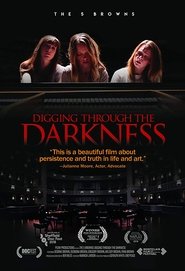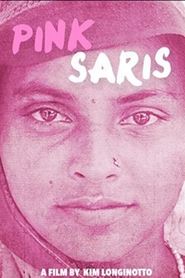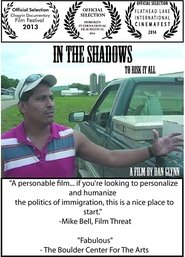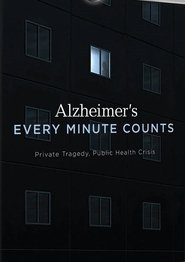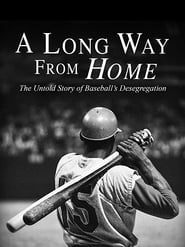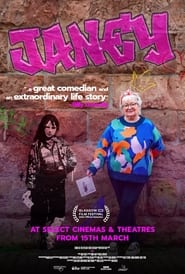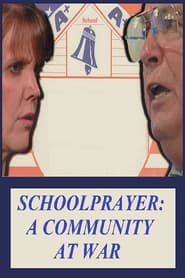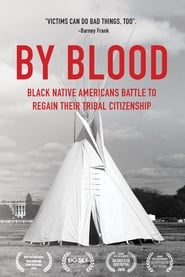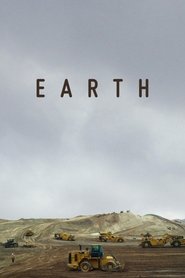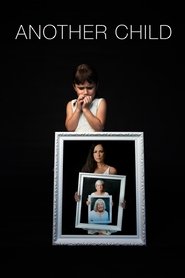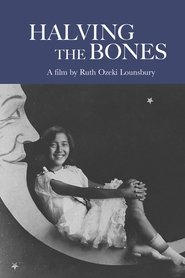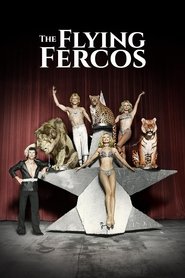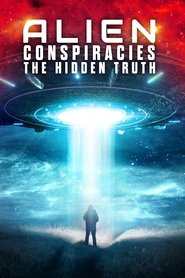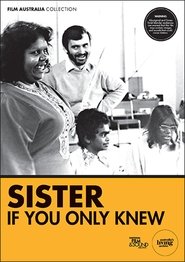Popular Documentary Movies on Kanopy - Page 253
-
The 5 Browns: Digging Through The Darkness
2018
star 6From worldwide acclaim to a nationwide political battle for survivor's of sexual abuse, "The 5 Browns" captures the emotional journey of the Juilliard trained, sibling piano prodigies - and their remarkable story of determination, healing and bravery as they come to terms with the sexual abuse the three girls suffered from their manager and father. -
Pink Saris
2010
Pink Saris
2010
star 4.6Sampat Pal Devi, founder of India’s Gulabi (“Pink”) Gang and fearless defender of the rights of untouchable women, challenges husbands, fathers-in-law and policemen in this immersive study by acclaimed documentarian Kim Longinotto. More than a profile of an everyday heroine, the film captures the courage and sacrifice necessary for social progress. -
In the Shadows
2013
In the Shadows
2013
This documentary by Dan Glynn follows the personal story of Jairo, a hard-working Mexican who immigrates to the US in order to find work to support his family back in Mexico. The film looks at current immigration issues in the United States. The story takes a dramatic turn, when Jairo's cousin is arrested by local police putting the entire family in danger of deportation. In the movie we meet numerous people who want to stem the tide of immigration from Mexico as well as people who help those who make the long, arduous journey to new employment in the United States. -
Alzheimer's: Every Minute Counts
2017
Alzheimer's: Every Minute Counts is an urgent wake-up call about the national threat posed by Alzheimer's disease. Many know the unique tragedy of this disease, but few know that Alzheimer's is one of the most critical public health crises facing America. Because of the growing number of aging baby boomers, and the fact that the onset of Alzheimer's is primarily age-related, the number of Alzheimer's case is predicted to skyrocket in the United States. This will not only be a profound human tragedy, but an overwhelming economic one as well. Due to the length of time people live with the illness and need care, it's the most expensive medical condition in the U.S. Future costs for Alzheimer's threaten to bankrupt Medicare, Medicaid, and the life savings of millions of Americans. -
Niagara Falls: Raging Rapids
2004
Now, in an inspiring film, we probe the secrets of Niagara Falls. From helicopter and speedboat, at high-tech labs and at rope's end, we join earth scientists as they struggle to piece together the epic life story of North America's most celebrated natural wonder. We experience the Falls that daredevils and stunters could never tame -- the Niagara that is a vertical battleground between water and rock. Most think of it as a vision eternal, but in fact, Niagara's life has been a geological blink of the eye. Only a hundred and twenty five centuries ago it was unleashed, born of the last glacial surge that swept the continent. Since then, it has traveled more than seven miles upriver, cutting the Earth's crust like a knife. Its relentless procession has granted scientists a breathtaking window into the past. -
A Long Way from Home: The Untold Story of Baseball's Desegregation
2018
Jackie Robinson broke baseball’s color line in 1947, but it took another generation of Black and Latino players to make the sport truly open to all. Playing in remote minor-league towns, these were the men who, before they could live their big-league dreams, first had to beat Jim Crow. -
The Cremaster Cycle: A Conversation with Matthew Barney
2004
For his five Cremaster films Matthew Barney's created a multitude of sculptural forms and structures. Recently both the sculptures and the films traveled to museums in Cologne, Paris and New York's Guggenheim. In THE CREMASTER CYCLE: A Conversation with Matthew Barney, the artist guides the camera through this remarkable creation at the Guggenheim Museum while being questioned by Michael Kimmelman, chief art critic of the New York Times. -
Janey
2024
Janey
2024
Janey Godley takes centre stage in this engaging and insightful documentary about the fearless and funny comic. Janey found fame for her sweary anti-Trump placards and became a social media sensation as she revoiced First Minister Nicola Sturgeon’s Covid briefings. 'First I was cancelled, then I got cancer,' Janey notes as she recalls being called out for racist historic tweets, apologising and then trying to rebuild her career before receiving her diagnosis. That didn’t stop her from going on tour and director John Archer interweaves fly-on-the-wall footage with interviews from people such as Jimmy Carr, Nicola Sturgeon, and Janey's daughter, Ashley, that reveal details of a difficult Glasgow childhood. -
School Prayer: A Community at War
1999
Lisa Herdahl, a Mississippi mother of six, is forced to sue her public school district in order to have The Bible removed from her childrens' classrooms. -
Advance Australian Film
2014
star 5.7It's been 20 years since an Australian film has reached number one at the yearly Box Office and our films have consistently grossed under 5% for the years. So what can we do to make a change? -
Downeast
2012
Downeast
2012
Explores Italian immigrant Antonio Bussone's use of federal grants to return factory work to the United States. -
By Blood
2014
By Blood
2014
star 5American Indians of African descent, or Freedmen, battle their own tribes and the federal government to regain their tribal citizenship. Witness how indigenous American Indian tribes, their minority members, and surrounding communities are confronting racism and intolerance. -
Earth
2019
Earth
2019
star 6.3Several billion tons of earth are moved annually by humans - with shovels, excavators or dynamite. Nikolaus Geyrhalter observes people in mines, quarries, large construction sites in a constant struggle to appropriate the planet. -
The American Revolution
2016
Everyone knows the story of Paul Revere and his famous midnight ride to warn colonial forces of the British approach. But history books don't tell of the man who sent Revere on his mission: Joseph Warren, America's least remembered founding father. Uncover the forgotten history of Warren and stories of other unsung heroes in our fight for independence in The American Revolution. -
Another Child
2021
Another Child
2021
star 10In a tale of twisted sex, religion and family, a mother and daughter team up — first to overcome their severe differences, and then to take steps to end a curse that has plagued their family for generations. -
Halving the Bones
1996
Halving the Bones
1996
A Japanese-American woman seeks to understand her heritage through the experiences of her immigrant mother and grandmother. -
The Sons of Tennessee Williams
2010
star 4.8Mardi Gras, drag balls and politics – where else could these elements come together but in New Orleans? Interweaving archival footage and contemporary interviews, The Sons of Tennessee Williams charts the evolution of the gay Mardi Gras krewe scene over the decades, illuminating the ways in which its emergence was a seminal factor in the cause of gay liberation in the South. -
The Flying Fercos
2024
The Flying Fercos
2024
The Flying Fercos delves into the lives of a family who shared their home-and their stage-with over 20 lions, tigers, and panthers. -
Alien Conspiracies - The Hidden Truth
2023
star 6Following up the hit documentary “UFO Conspiracies: The Hidden Truth”, a shocking expose of hidden extra-terrestrial knowledge, going beyond UFO sightings and ‘lights in the sky’ to actual alien contact; visitations, abductions, and most astonishing of all, the possibility that aliens not only walk among us but have perhaps done so since the beginning of time! -
Sister, If You Only Knew
1975
star 7This film explores the pressures experienced by Aboriginal women living in the city, and the effect that these pressures also have on their men and their children. In spite of all life's difficulties, the women seem to survive the urban environment better than the men. Their humour, intelligence and resilience in the face of adversity shines through.
 Netflix
Netflix
 Amazon Prime Video
Amazon Prime Video
 Apple iTunes
Apple iTunes
 Apple TV Plus
Apple TV Plus
 Disney Plus
Disney Plus
 Google Play Movies
Google Play Movies
 Paramount Plus
Paramount Plus
 Hulu
Hulu
 HBO Max
HBO Max
 YouTube
YouTube
 fuboTV
fuboTV
 Peacock
Peacock
 Peacock Premium
Peacock Premium
 Amazon Video
Amazon Video
 The Roku Channel
The Roku Channel
 AMC+
AMC+
 Kocowa
Kocowa
 Hoopla
Hoopla
 The CW
The CW
 Vudu
Vudu
 Starz
Starz
 Showtime
Showtime
 PBS
PBS
 Pantaflix
Pantaflix
 FXNow
FXNow
 Tubi TV
Tubi TV
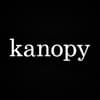 Kanopy
Kanopy
 Comedy Central
Comedy Central
 Crunchyroll
Crunchyroll
 Microsoft Store
Microsoft Store
 Redbox
Redbox
 Sun Nxt
Sun Nxt
 ABC
ABC
 DIRECTV
DIRECTV
 Crackle
Crackle
 Fandor
Fandor
 Plex
Plex
